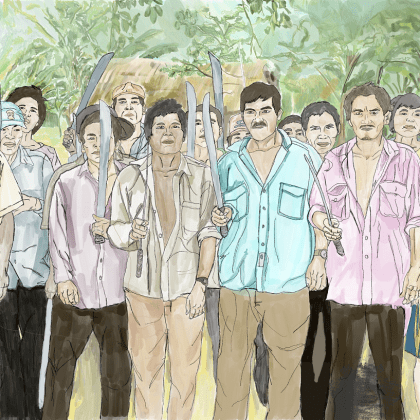How agents change institutions: Coalitional dynamics and the reform of commercial training in Switzerland
While historical institutionalism gives priority to structure over agency, institutions have never developed and operated without the intervention of interested groups.[1] However, despite numerous recent advances in historical institutionalism,[2] the literature has made little progress in developing a “more actor-centered approach.”[3] This should not come as a surprise. Injecting agency into historical-institutionalist accounts is challenging. The reason is what Peter Hall calls the problem of plasticity: If institutions are structuring agents’ actions, while these agents’ behaviors simultaneously structure the institutions, the ontological status of institutions remains unclear.[4] At the most extreme, institutions may play no causal role at all.[5] Hence, a more actor-centered approach must ultimately explain both what changes and what stabilizes institutions.
In this paper, we aim to inject more agency into historical institutionalism. Based on recent historical institutionalist scholarship following the “coalitional turn,”[6] we develop a new account of institutional change and stability that awards a central role to agency. Our main argument is that constant coalition building by organized entrepreneurial actors is necessary for both reproduction and change in institutions. Agency is needed to create challenger coalitions, but agency is also necessary to maintain incumbent coalitions. Finally, agency plays a key role in maintaining or gaining the relevant state agency’s support, which is often important because state agencies stabilize institutions by supporting the incumbent coalition or facilitate institutional change by withdrawing support from the incumbents.
To illustrate the potential of our actor-centered approach to institutional change, we analyze the reform of commercial training in Switzerland, which is by far the most popular apprenticeship in Switzerland’s vocational education and training system, tracing developments from the beginning of the 1980s until today. During this period, a reform process was set in motion that fundamentally changed the governance of commercial training. While commercial training was originally stabilized by a coalition between vocational schools and commercial employees, business interest associations from diverse economic sectors now dominate its governance. Conducting a systematic process analysis, we show how dynamics of coalition building and coalition collapse are sources of both institutional reproduction and change in Swiss commercial training and how such coalitional dynamics can result in transformative or gradual change.
Read the full article ‘How agents change institutions: Coalitional dynamics and the reform of commercial training in Switzerland‘ published in Business and Politics
References:
[1] DiMaggio (1988).
[2] Mahoney and Thelen (2015).
[3] Fioretos, Falletti, and Sheingate (2016), 15.
[4] Hall (2016).
[5] Capoccia (2016).
[6] Hall and Thelen (2009).






